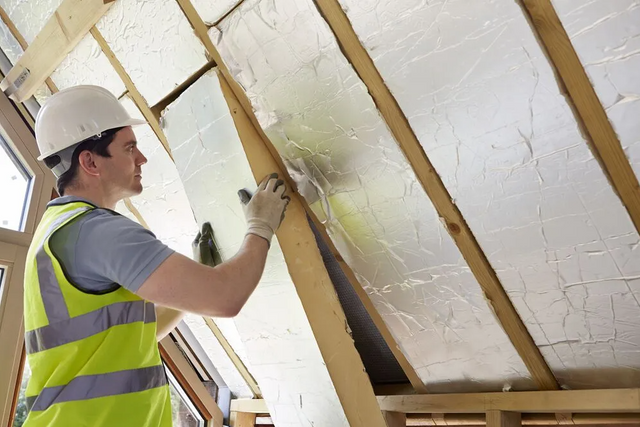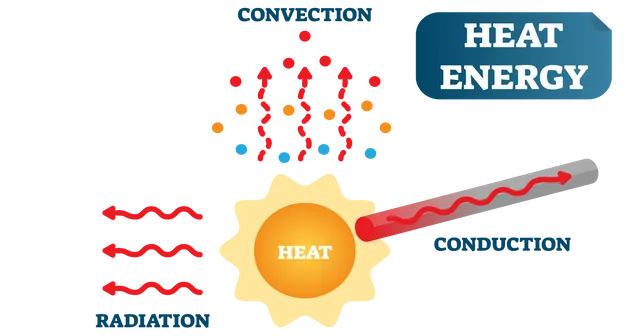The Power Of Thermal Insulation
INSULATE!
Insulation is something that we experience every moment of every day whether we realize it or not. From the cloths we wear to the hair on our arms, we as humans are masters of heat. This mastery of the natural world exhibits itself in many different ways, but perhaps is most obvious in our largest structures, buildings.
It is impossible to retain all heat in a system. The conservation of energy is fickle and has been at the forefront of architecture in many different ways. As building technology improves, there is one thing we constantly grapple with, and it is, how do we keep our buildings warm?

There are many different approaches to this problem. You would think that it has been figured out since we humans have been insulating ourselves from the environment from the very first article of clothing thought up eons ago. There are many solutions our ancestors used that we still utilize in modern structures today. Concepts like thermal mass, porous and fluffy building materials, and simply moving somewhere where it's not an issue! In modern construction, the balancing energy efficiency, indoor comfort, and environmental sustainability and economy complicates this simple solution. But why is all this so essential? The answer lies in the science of how heat, air, and moisture interact with buildings.
Controlling Heat Transfer
Heat flows in three ways:
Conduction (through materials)
Convection (via air movement)
Radiation (infrared energy transfer)

Insulation combats all three by acting as a thermal barrier. In the winter, it prevents heat from escaping your home, keeping interiors warm without overworking your heating system. In summer, it reduces heat gain, keeping cooling costs in check. So pretty much anywhere you live that has naturally uncomfortable temperatures can be made comfortable by simply using thermal insulation. There are some lucky places which live in the goldilocks zone of human comfort, like San Diego and other areas of California.
Managing Airflow
Insulation works in tandem with air-sealing measures to minimize drafts and air leakage. Uncontrolled airflow not only undermines energy efficiency but also brings in moisture and pollutants, which can degrade indoor air quality, ruin your walls with mold and rot, and if nothing else costs you money through extra heating and cooling costs. Proper detailing to ensure a wall is vapor permeable but stops most air flow will go a long way in keeping a properties value and comfort levels high.
Moisture Control
Moisture is a building's silent enemy. This is not because moisture is inherently bad, but because it is handled improperly in almost every case it is encountered. The philosophy of old was, prevent all passage of moisture using impermeable materials. The idea was that if no moisture gets in, you have no problem. This would be a great idea if this was an ideal world. Moisture can and will ALWAYS get in. What separates a well performing building from one that will be bulldozed in 20 years if lucky, is how moisture is managed. There is a misconception that wood and other building materials cannot get wet. This may be true for some as specified by the manufacturer, but more often than not, the problems come from when the materials cannot dry. If the OSB sheathing in a wall gets wet and is designed such that it can vent out that moisture reasonably quickly, that wall will last half a century without issue. This is why air gaps are critical.
Moisture comes not only from outside, but from within as well. Think about your bathroom shower, how much steam that produces. The bowls of water in your kitchen sink soaking because you don't want to wash them. Even the water we breath out with every breath. The amount of water that exists in the air is actually astonishing, and providing somewhere for that moisture to escape is essential. This is where vapor profiles of a wall come into play, and making sure that your building can dry out.
Energy Efficiency and Sustainability
According to the U.S. Department of Energy, heating and cooling account for roughly half of a household's energy use. Proper insulation reduces the need for excessive heating and cooling, lowering utility bills and cutting greenhouse gas emissions. Additionally, many modern insulation materials are made with eco-friendly or recycled content, further supporting sustainability goals.
Constructing a building with proper insulation will not just save you money in the short term, but will increase the long-term value and make it a more comfortable building to occupy. So if you can, spend the extra money to invest in your health, comfort and wallet.
Beyond Comfort
Insulation isn't just about temperature control. It
Sources:
https://insulationinstitute.org/wp-content/uploads/2018/05/N082-Building-Science-101.pdf
https://neothermalinsulation.com/blog/thermal-insulation-in-buildings-science-and-benefits/
https://bsesc.energy.gov/energy-basics/heat-flow